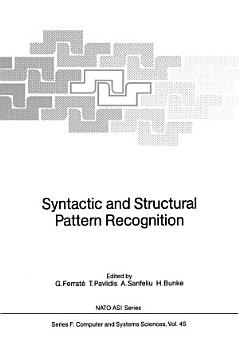Syntactic and Structural Pattern Recognition
Gabriel Ferrate · Theo Pavlidis · Alberto Sanfeliu · Horst Bunke
Dec 2012 · Nato ASI Subseries F Book 45 · Springer Science & Business Media
eBook
471
Pages
reportRatings and reviews aren’t verified Learn more
About this eBook
Thirty years ago pattern recognition was dominated by the learning machine concept: that one could automate the process of going from the raw data to a classifier. The derivation of numerical features from the input image was not considered an important step. One could present all possible features to a program which in turn could find which ones would be useful for pattern recognition. In spite of significant improvements in statistical inference techniques, progress was slow. It became clear that feature derivation was a very complex process that could not be automated and that features could be symbolic as well as numerical. Furthennore the spatial relationship amongst features might be important. It appeared that pattern recognition might resemble language analysis since features could play the role of symbols strung together to form a word. This led. to the genesis of syntactic pattern recognition, pioneered in the middle and late 1960's by Russel Kirsch, Robert Ledley, Nararimhan, and Allan Shaw. However the thorough investigation of the area was left to King-Sun Fu and his students who, until his untimely death, produced most of the significant papers in this area. One of these papers (syntactic recognition of fingerprints) received the distinction of being selected as the best paper published that year in the IEEE Transaction on Computers. Therefore syntactic pattern recognition has a long history of active research and has been used in industrial applications.
Rate this eBook
Tell us what you think.
Reading information
Smartphones and tablets
Install the Google Play Books app for Android and iPad/iPhone. It syncs automatically with your account and allows you to read online or offline wherever you are.
Laptops and computers
You can listen to audiobooks purchased on Google Play using your computer's web browser.
eReaders and other devices
To read on e-ink devices like Kobo eReaders, you'll need to download a file and transfer it to your device. Follow the detailed Help Centre instructions to transfer the files to supported eReaders.










